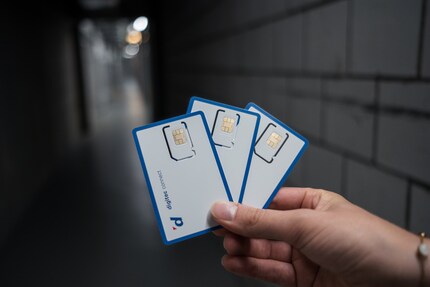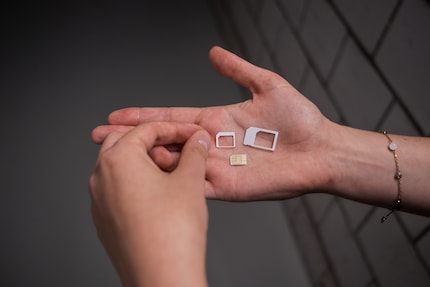
Behind the scenes
Useful technology – not just for smartwatch wearers and architects
by Norina Brun

It's easy to lose track of all the different SIM cards and their variants. Here you can find out what the different SIM standards are and what they can do.
Digitec connect introduces MultiSIM. Many of my editorial team have no idea what to make of this or what it means. As my colleagues are otherwise with a few exceptions well informed, I thought that there must be other people who need information. So that you know what you can do with a MultiSIM, an eSIM or a nano-SIM in future, here is an explanation of the SIM terms.
MultiSIM allows you to use one mobile subscription with multiple devices. Or vice versa: several devices with one plan. In other words, you don't just get one SIM card for your plan, but several. So that everyone is confused by the first term, MutliSIM is sometimes also called Multi Device. With the additional SIM card, you can use your smartwatch, for example, with the same mobile number and the same mobile phone contract. So you can leave your smartphone at home and be
reachable on the watch.
There are different profiles in the background with MultiSIM. On the surface, you simply get MultiSIM activated. In the background, depending on the provider, not both SIM cards are active for every profile - this means that you cannot always make calls with both cards at the same time. There are basically three profiles: Data, Data & Voice and Watch. The Data profile only includes Internet data, calls are not included. With Data & Voice, calls can be made, but only with the SIM card that is set as active. The Watch profile is the only one where several devices can be reached at the same time.
Routers or laptops can also be used with a MultiSIM. I have tried this out myself.
However, I realised that many providers limit the amount of data on the second SIM card. This means that you may not be able to simply operate a network with another SIM card and a router.
Smartwatches in combination with MultiSIM are another matter. Smartwatches very rarely have a SIM slot. We only have a few such models in our range. Or a children's watch. The new smartwatches work with an eSIM, so they are part of MultiSIM, so to speak.

An eSIM is a SIM that is already built into a mobile or watch. The "e" stands for embedded. This means you don't get a physical SIM card in your hand. The technology has been around for almost four years, but hasn't really caught on yet.
In most cases, the eSIM on mobile phones is activated with a QR code. You can find all mobile phones from our range that work with eSIM at this link. The biggest advantage, apart from the fact that no physical SIM card is required with the eSIM, is that the SIM slot in the mobile phone remains free. This means, for example, that you can activate an eSIM with a plan for your home country and insert a country-specific card when you are travelling to save on roaming costs. Many providers charge a fee for the physical SIM card. This does not apply with the eSIM.
Most smartwatches that work with 4G or 3G have an eSIM installed. This allows you to leave your smartphone at home and take your calls on the watch.
DualSIM is only available on mobile phones and means that there are two SIM slots. This means that two SIM cards can be inserted into one mobile phone. Depending on the type, the mobile phone can use the SIM cards alternately or simultaneously. Apple also calls iPhones that work with an eSIM as well as a normal SIM card DualSIM.
DualSIM devices are practical if you want to separate private and business calls, but only want to carry one mobile with you. Or if you are often abroad and want to use the local network anyway.
You can find all dual SIM mobiles at this link. There are models that have a hybrid dual SIM slot. This means that either an additional SIM card or a memory card can be inserted in the slot.
The last three SIM terms refer to size. There are three different SIM sizes: Nano, Micro and Mini.

The nano sim card is the smallest card. It has just enough space for the actual chip. Almost all newer mobiles require a nano SIM. The nano SIM was introduced in September 2012 with the iPhone 5.
You may still remember how you tried to cut your micro SIM card to the nano size back then. As this is also a little thinner, I tried it with a nail file - and of course failed like many users.
Before the nano SIM was declared the new standard, the micro SIM was assigned this position. In terms of size, it lies between the nano and mini SIM.
The first devices with a micro SIM were the iPads in 2010, followed by Nokia and Motorola.
The largest SIM card is the mini card. To confuse matters, it is sometimes also called standard, although nano is actually the norm today.
Mini SIMs are now only found in senior mobile phones.
Testing devices and gadgets is my thing. Some experiments lead to interesting insights, others to demolished phones. I’m hooked on series and can’t imagine life without Netflix. In summer, you’ll find me soaking up the sun by the lake or at a music festival.
Practical solutions for everyday problems with technology, household hacks and much more.
Show all